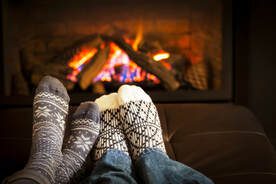If you are a homeowner in Charleston, SC, then you know the winters have the potential of getting pretty cold. And, if your body is used to the warm weather, it can be quite a shock. However, another shocker will be your utility bill if you keep your thermostat set at too high a temperature. So what temperature should you set your thermostat to during the winter?
The Correct Winter Temperature for Your Thermostat
There really is no right or wrong answer to this question. However, most information regarding winter thermostat temperatures will tell you the ideal temperature for your thermostat during the winter is between 60 and 65 degrees Fahrenheit. But most people feel more comfortable with the temperature set a little higher than that. Just remember for each degree you turn your thermostat up, the higher your utility bill will be.
How to Reduce Your Utility Bills Using Your Thermostat
On the days you will be away from your home eight or more hours, set your thermostat 10° to 15° lower than you would if you were home. This could save you between five and fifteen percent on your yearly utility costs.
Install a Programmable Thermostat
Another way to reduce your utility bills is to install a programmable thermostat. You can set your programmable thermostat to fit your schedule and you won’t have to remember to adjust it every time you come and go.
Avoid Constantly Adjusting Your Thermostat’s Temperature
If you are constantly changing your thermostat’s temperature, it will cause it to turn off and on more often, making your utility bills skyrocket. Not adhering to proper thermostat habits could result in wasted energy, causing your utility bills to go up. Turn your thermostat down a few degrees to save money on your utility bills. Your body will quickly adjust to the point where you won’t even notice the difference.
If you would like more information about how to properly use your existing thermostat or installing a new programmable thermostat, contact Smoak’s Comfort Control today! We look forward to assisting you.

